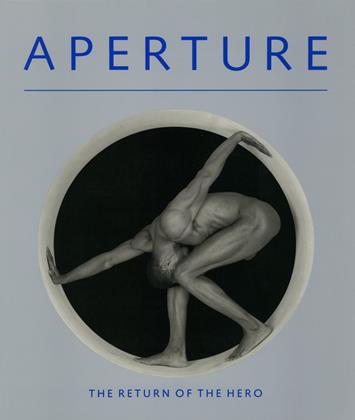The Return of the Hero
Editor's Note
"The hero is the true subject of modernism," said Walter Benjamin, and the modern hero/warrior/survivor has proliferated in our cultural proscenium. In incarnations from the Oliver North hearings of last summer to the uneasy, celebratory struggles in cinema to define a new, reconstituted, post-Vietnam notion of heroics, the hero’s cyclic resurgence—born of necessity, called by destiny—might be read as the harbinger of an apocalyptic future, or as reassurance that intervention will continually triumph.
In this issue, the heroic motif in symbol and allegory is explored in various interpretations, from the memory of American historical myths alluded to in the mysterious tableaux of David Levinthal, to the satiric war totems of Mark Chambers; from the poignant, awkward heroes of World War I, portraits made by Peter Morello outside Westminster Abbey, to the saga of the anti-hero in words and pictures by Bill Burke. The militaristic hero competes in kind with the aggressive artist-as-hero of the 80s, in the persona of Robert Mapplethorpe, who levitates the hero as godhead to celebrity in the here-and-now.
“We don’t need another hero,” Barbara Kruger’s billboard cries, yet photography has participated in the hero-worship of the decade. We have witnessed the print grow in size, with pretensions upscaled accordingly. The photograph as art-object has been spewn forth in the form of installations, sculptures, artist books, paintings, and performances, utilized by artists seeking the real life blood and guts that the photo-image can provide. Some of these uses in radically diverse media are represented in this issue: the Starn Twins’ distressed collages, the sculptures of Jeff Weiss, the painted images of Annette Lemieux, the eerie filmic projections of Krzysztof Wodiczko.
“Around the hero, everything turns into tragedy,” said Nietzsche. Perhaps we are witnessing the spectre of late mercantilism— another era’s demise was characterized by those frankly fake Roman copies of Greek originals that sustained the Empire’s image when the barbarians were already at the gates. Heroes are products of ideology and representation, a special calling, a process of intense and esoteric education, fulminating success, and an eventual forgetfulness of the purity of the ideal. In the return of the hero in visual representation, we read the epitaph of our society’s dreams.
THE EDITORS
 View Full Issue
View Full Issue
More From This Issue
-

Bill Burke: I Want To Take Picture
Spring 1988 By Willis Hartshorn -

The Labors Of Psyche
Spring 1988 By Lee Edwards -

Property, Patriotism And National Defense
Spring 1988 By Wendell Berry -

Heroes
Spring 1988 By Glenn O’Brien -

The Fascist Guns In The West
Spring 1988 By J. Hoberman -

Peter Morello: Remembrance Day
Spring 1988
Subscribers can unlock every article Aperture has ever published Subscribe Now
The Editors
-
 Editor's Note
Editor's NoteNew Southern Photography: Between Myth And Reality
Summer 1989 By The Editors -
 Editor's Note
Editor's NoteBeyond Wilderness
Late Summer 1990 By The Editors -
 Editor's Note
Editor's NoteOn Location
Winter 1997 By The Editors -
 Note
NoteNote
Fall 2010 By The Editors -
 Back
BackObject Lessons Lunar Hasselblad 1968
Summer 2013 By The Editors -
 Object Lessons
Object LessonsSelf-Portrait By Chief S. O. Alonge, Benin City, Nigeria, Ca. 1942
Summer 2017 By The Editors







